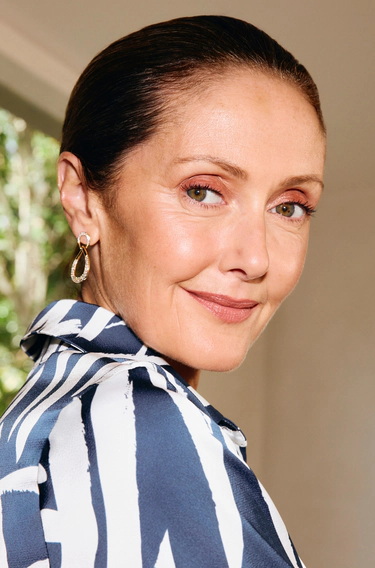How to Combat Redness on the Face
If your skin is prone to redness, help is at hand. With the right knowledge and products, you can restore balance and boost your skin’s health and vitality.
In this guide, we’ll explore the causes of redness, and provide tips for managing this condition. We’ve also included our top skincare products for redness and rosacea, featuring dermatologist-approved ingredients.
Keep reading to learn how to decrease redness on the face. Once you’ve found a skincare routine that works for you, it’s easy to keep your skin looking its best every day.
The Causes of Facial Redness
It’s important to understand what’s causing your facial redness. Here are some common culprits:
Weather: Sunny weather can cause your skin to look flushed, as can cold and windy conditions.
Stress: Hormones such as adrenaline and cortisol can expand blood vessels and give your face a red appearance.
Diet: Spicy foods, alcohol and caffeine are all known to increase skin redness.
Allergies: Red, bumpy and puffy skin might be caused by exposure to an allergen.
Skin conditions: Your facial redness might be caused by a condition such as eczema, rosacea or acne.
If you’re unsure, seek professional advice from a doctor or dermatologist. Once you know your triggers, it will be easier to care for your skin.
Skincare Routine for Redness-Prone Skin
Here, we’ll explain how to combat redness on the face by using soothing and nourishing skincare products. By following a few simple steps, you can give your skin the nutrients it needs for optimal health.
From hydrating cleansers to cooling serums, Myer’s range of premium skincare can help to improve your skin tone.
Step 1: Cleanse
Luminous and healthy skin begins with a good quality cleanser. If your skin is red, sore or inflamed, it’s best to use a cleanser that’s ultra-soothing and gentle.
Myer’s collection of cleansers and makeup removers are formulated from calming ingredients such as aloe vera and chamomile. We’ve also got fragrance-free options that can soothe irritation and minimise redness.
Step 2: Use Alcohol-Free Toner
After cleansing, use an alcohol-free toner to further calm and balance your skin. Myer has a wide selection of gentle toners and face mists that are suitable for people with sensitive complexions.
Toners that are fortified with antioxidants such as green tea are perfect for keeping your skin nourished, while moisture-rich agents such as hyaluronate will provide a boost of moisture – for a complexion that’s supple and vibrant.
Step 3: Apply Anti-Redness Serums
After cleansing and toning, apply a nutrient-rich serum to reduce inflammation and even out your skin tone. These products to reduce redness on face are fortified with plant extracts which can assist with skin cell regeneration – giving you a more balanced complexion.
Explore Myer’s collection of serums and treatments to find effective treatments for facial redness. These serums can also help to reduce the signs of ageing.
Step 4: Gently Moisturise
Want to know how to get rid of redness on the face? Proper hydration is essential for resolving damage caused by harsh weather conditions. A quality moisturiser can also help to fortify your skin’s natural barrier.
We recommend using a gentle moisturiser that’s lightweight and non-comedogenic. Look for ingredients such as hyaluronic acid to lock in moisture, and antioxidants to assist with skin cell repair.
Step 5: Apply SPF
Sun exposure can cause your skin to become dry and damaged. An easy way to protect your skin and prevent facial redness is to use SPF skincare products from Myer’s sun care collection.
Perfect for everyday use, our skincare range includes ultra-light moisturisers and nourishing lip balms. Our products are ideal for the Australian climate, making it possible to step outside with confidence.
Skincare Ingredients that Help to Reduce Redness
The right skincare ingredients can reduce facial redness and promote a calmer complexion. Here are some to try:
Aloe vera: Soothes and cools irritated skin, reducing redness with anti-inflammatory properties.
Chamomile: Calms inflammation and visibly reduces redness.
Cucumber: Refreshes with cooling properties that soothe sensitive skin.
Beta glucan: Strengthens the skin’s barrier, reducing redness and improving health.
Niacinamide: Regulates oil, minimises pores and reduces redness.
Salicylic acid: Exfoliates and unclogs pores, reducing redness from breakouts.
Gycolic acid: Improves skin tone by removing dead cells and boosting cell turnover.
Tips to Soothe Redness
Here, we’ll explain how to get rid of red skin on the face and restore a calm complexion:
Cool compress: Soak a clean washcloth in cold water and gently place it on red areas for a few minutes. The cool temperature reduces inflammation and provides relief.
Fragrance-free products: Avoid scented products that may irritate skin. Choose hypoallergenic options with ceramides, niacinamide or hyaluronic acid to strengthen the skin barrier.
Consistent routine: Stick to a gentle skincare routine to maintain progress.
Consult a dermatologist: For tailored advice, see a professional.
FAQs on Facial Redness
What is facial flushing?
Facial flushing is a condition where the face suddenly becomes red – often accompanied by a warm sensation. It can be caused be a variety of factors ranging from spicy food, alcohol consumption, emotional triggers or certain medical conditions.
Want to know how to reduce redness on the face fast? Here are some ways you can combat the effects of facial flushing:
Cool compress: Apply a cold, damp washcloth to your face to soothe redness.
Green-tinted primer: Use a green-tinted makeup primer to neutralise redness instantly.
Stay hydrated: Drink cold water to help cool your body from the inside out.
Deep breathing: Practice slow, deep breaths to calm your nervous system and reduce stress-related flushing.
What's the difference between redness and rosacea?
Rosacea is a chronic skin condition characterised by persistent redness, visible blood vessels and a bumpy skin texture. If you think you might have rosacea, it’s important to consult a dermatologist for proper diagnosis and treatment. They can also advise you on the best rosacea skin care routine to minimise your symptoms.
Does skin redness go away?
In many cases, skin redness can fade away on its own – especially if it's caused by temporary factors like sunburn or irritation. However, chronic redness may require targeted skincare routines and treatments to manage and reduce its appearance.
Why is my skin so red after skincare?
Redness after skincare is sometimes caused by sensitivity to certain products or ingredients. This can happen if you’ve used harsh exfoliants, or if the products contain irritants like fragrances or alcohol. Overuse of active ingredients like retinol, glycolic acid or salicylic acid can also sometimes lead to redness. Additionally, applying products too aggressively or using hot water during cleansing can exacerbate redness. To minimise this, introduce new products gradually, stick to gentle, fragrance-free options and ensure your skin is well-hydrated to support its barrier. If the redness persists or becomes severe, discontinue use and consult a skincare professional.
Can too much moisturiser make skin red?
Using excessive amounts of moisturiser or applying it incorrectly can potentially lead to skin redness. It's important to use the appropriate amount for your skin type and follow proper application techniques to avoid any adverse reactions.










